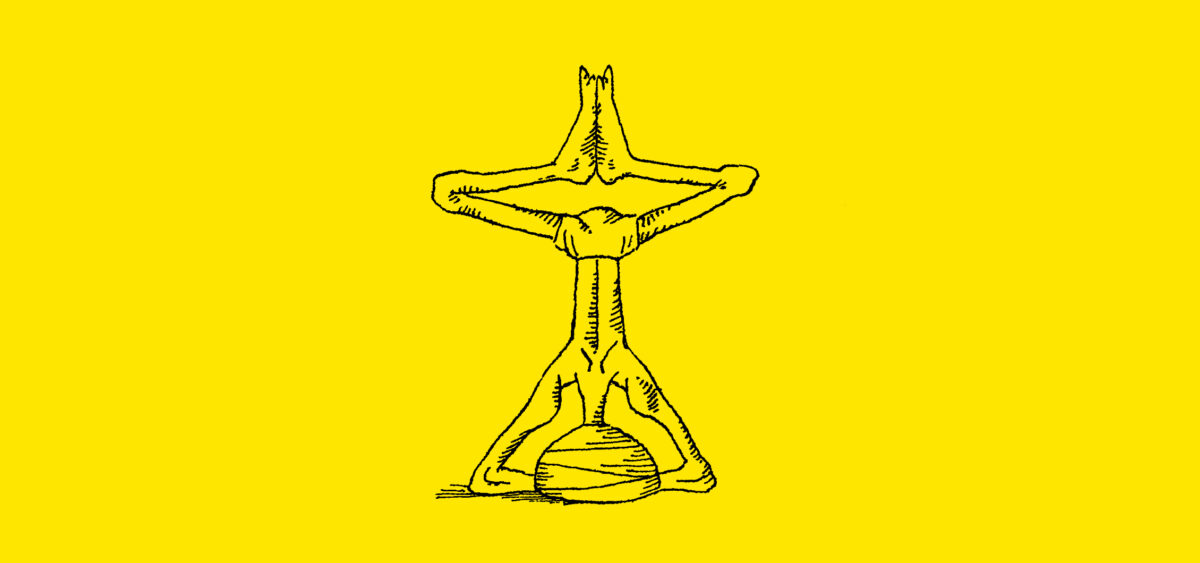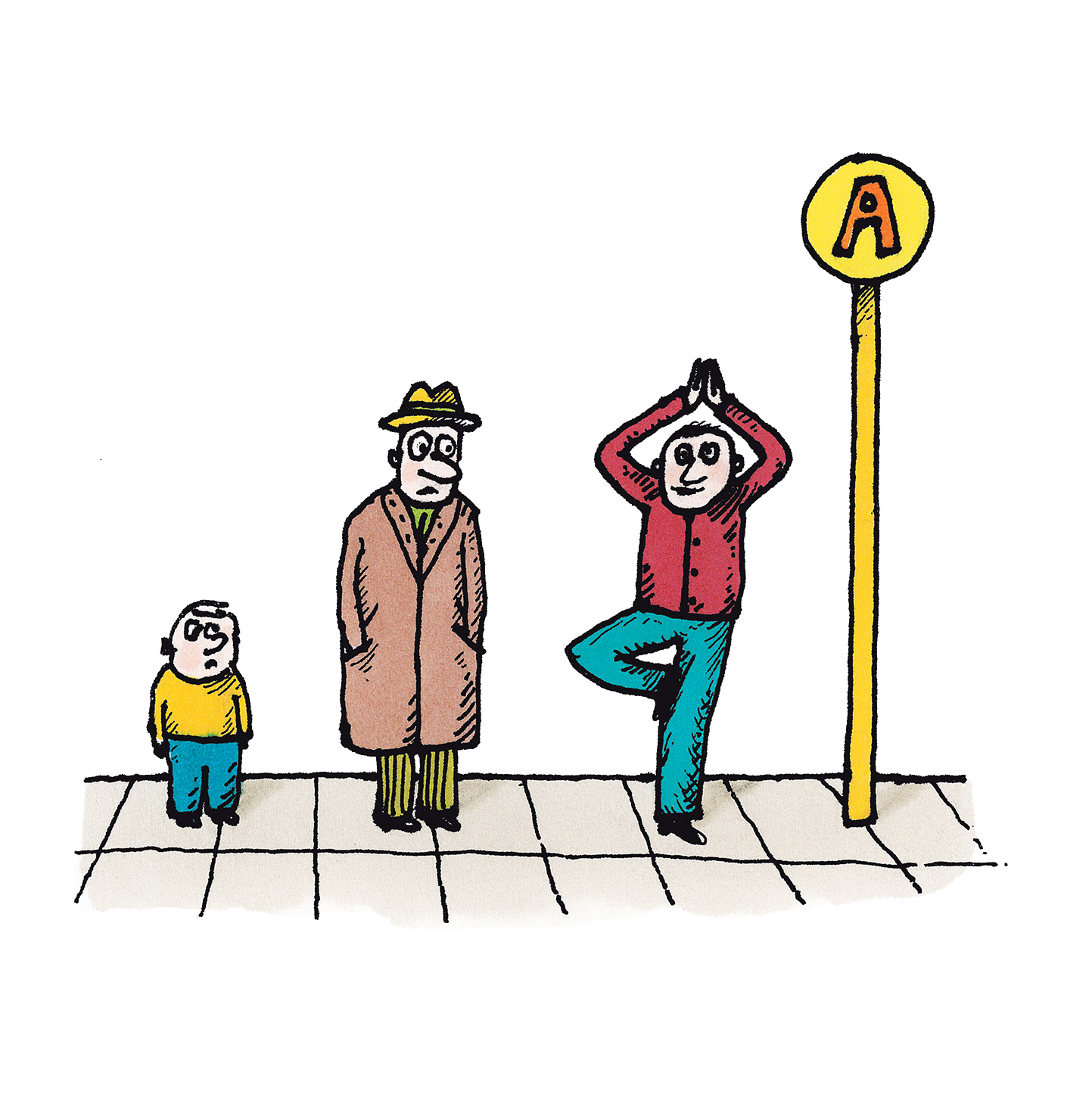
Some walk with their feet firmly on the ground, others with their heads in the clouds. Still, we are all subject to gravitational force. It’s good to reverse its effect, every once in a while. Our mind—and even more so, our body—needs a change of perspective.
When standing up, our ankles, knees, hips, shoulders, and ears follow the line of gravity running straight toward the center of the Earth. The more our posture deviates from the correct upright shape, the more energy we need to overcome gravity. With bad posture, we waste a lot of our precious life force. This is a good argument in favor of exercises that improve posture. The argument for standing on your head, which is what I encourage you to do, is to improve the efficiency of many systems in our body—primarily circulatory, respiratory, and endocrine—which are also affected by the force of gravity.
When upside down, the venous return (the amount of blood returning to the right atrium per minute) increases and blood flows to the heart effortlessly. This stimulates circulation while changing the position of the organs; it improves the functioning of the diaphragm, so that one can deepen exhalation better and get more carbon dioxide out of the lungs; it oxygenates cells.
The Magic of Inversion
Among all possible exercises, yoga offers unique inverted positions. The list of benefits is long. In addition to improving overall strength, they increase energy and speed up digestion. Inversions stimulate the pituitary and pineal glands, and increase lung capacity and function. They also alleviate the symptoms of meno- and andropause, provide relief to asthmatics, and people suffering from chronic sinusitis, soothe back pain, relax the neck, reduce muscle tension, and improve blood circulation and concentration.
The queen of yoga’s asana body posture is the headstand, called salamba sirsasana or simply sirsasana (alamba, meaning “support” in Sanskrit; sirsa, “head,” and asana, “pose”). This is an advanced and demanding position, and not everyone can do it. If the arms are too weak or the spine is unable to support the weight of the whole body, hanging upside down becomes an alternative. With the help of a qualified instructor, there are plenty of methods for achieving similar benefits to a headstand without straining the cervical vertebrae. The spine is lengthened and arterial circulation is improved even after only for five to six minutes, allowing the entire system to invert.
Step by Step
For those who don’t want to invest in additional accessories, like inversion belts or chairs, there is another method—step by step. Start with preparatory positions, such as Downward Dog (adho mukha svanasana), Standing Forward Bend (uttanasana), Cow Face Pose (gomukhasana), Hero Pose (virasana), and finally move to Shoulder Stand (sarvangasana), which offers the full benefits of inversion. Staying in this position for at least two to three minutes is not only relaxing, but it regenerates the nervous system, stimulates the thyroid and parathyroid glands, strengthens the lungs, and reduces fluid retention.
With all that in mind, it’s true that it’s better to turn the world upside down, just for a moment, than it is to turn away from the world altogether.

Translated from the Polish by Joanna Figiel







